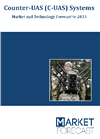On June 17, 2025, the upgraded version of the MISTRAL 3 missile passed its final qualification test in Spain. This successful launch confirmed that the missile can now target and destroy small, fast-moving boats - known as Fast Inshore Attack Craft (FIAC) - even at night. It follows a previous test in July 2024, where the missile successfully intercepted drone targets with very weak infrared signatures, a growing challenge for modern defence systems.
Thanks to improvements in flight control, guidance and image processing, the MISTRAL 3 can now stop lightweight FIAC boats and other small naval threats, including unmanned surface vessels (USV). These kinds of threats are becoming more common in today’s conflicts. MISTRAL 3 is currently the only combat-proven, very short-range air defence missile with proven performance against these types of targets, both during the day and at night.
The missile is used in the SIMBAD-RC system, which has also been upgraded to better protect ships from mass attacks. Together, these improvements offer stronger self-defence for naval platforms against both traditional air threats and newer maritime dangers.

Market forecast by Region, End-User, and Mitigation Type. Country Analysis, Market and Technology Overview including Critical Raw Materials, Opportunity Analysis, and Leading Company Profiles
Download free sample pages More informationIn the July 2024 test, MISTRAL 3 also showed better performance in its anti-drone mode by successfully shooting down a Shahed-type drone. This upgrade strengthens MBDA’s broader anti-drone system, known as SKY WARDEN, in which MISTRAL 3 plays a key role.
With these successful tests, the upgraded MISTRAL 3 is now fully qualified to counter the new threats that armed forces face today. The updates make the system more versatile and effective across a wider range of air and naval threats. They also highlight MBDA’s commitment to helping our armed forces maintain an edge by offering modern, reliable and sovereign solutions to today’s fast-changing challenges.